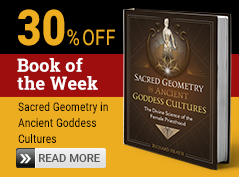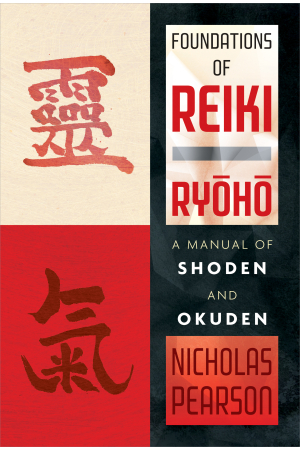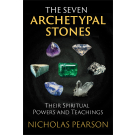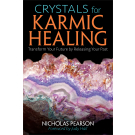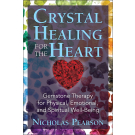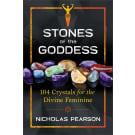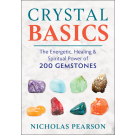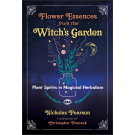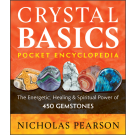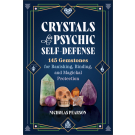Availability:
In Stock
- Pages: 352
- Book Size: 6 x 9
- ISBN-13: 9781620556733
- Imprint: Healing Arts Press
- On Sale Date: April 3, 2018
- Format: Paperback Book
- Illustrations: 70 b&w illustrations
Bridging Eastern and Western lineages to reclaim Reiki’s roots as both a healing art and a spiritual practice, Nicholas Pearson offers a new comprehensive exploration of the original Japanese techniques and modern tools of the first degree and second degree of Reiki Ryoho practice, including effective hand positions, self-healing exercises, and spiritual meditations.
A comprehensive guide to the first and second degrees of Usui Reiki Ryoho as well as Reiki’s history and Western evolution
• Details hand positions, self-healing exercises, spiritual development meditations, and the Japanese Reiki techniques introduced in the first degree, shoden, and the second degree, okuden
• Provides a thorough introduction to the five levels of byosen, the energetic mechanism used to scan an individual’s energy field and locate areas of disharmony
• Examines the core teachings of Reiki founder Usui Mikao and offers a new comprehensive exploration of Reiki’s history and evolution
• Explores tools and techniques adapted by Western lineages, such as working with crystals and the chakras
Bridging Eastern and Western lineages to reclaim Reiki’s roots as both a healing art and a spiritual practice, Nicholas Pearson offers a new comprehensive exploration of Reiki’s history and evolution, the foundations of Usui Reiki Ryoho theory and practice, and the original techniques and modern tools of both the first degree, shoden, and second degree, okuden. He explores the etymology of key Reiki terminology and presents a complete discussion of the origins of the symbols used in the second degree, providing new historical, cultural, and spiritual context. He examines the core teachings of Reiki founder Usui Mikao, who taught that Reiki Ryoho enacted healing at the soul level, as well as insights from other important Reiki masters such as Hawayo Takata.
Explaining what Reiki is and how it heals, the author outlines the six core characteristics that all varieties of Reiki share, including initiations and the Five Precepts. He details effective hand positions, self-healing exercises, spiritual development meditations, and the Japanese Reiki techniques introduced in first degree and second degree practice. He also explores a number of other techniques that have been adapted by Western lineages, such as aura sweeping, chakra tune-ups, and charging and programming crystals with Reiki. He provides a thorough introduction to the five levels of byosen, the energetic mechanism used to scan an individual’s energy field and locate areas of disharmony, allowing you to increase your ability to sense centers of toxic imbalance as well as begin dislodging them, thereby increasing the effectiveness of Reiki treatment.
Offering Reiki tools to transform your life from the inside out, Pearson shows how Reiki Ryoho is a healing system that focuses on the inner and spiritual aspects of your being first, allowing you to polish the heart so it reflects the shining light of the soul.
• Details hand positions, self-healing exercises, spiritual development meditations, and the Japanese Reiki techniques introduced in the first degree, shoden, and the second degree, okuden
• Provides a thorough introduction to the five levels of byosen, the energetic mechanism used to scan an individual’s energy field and locate areas of disharmony
• Examines the core teachings of Reiki founder Usui Mikao and offers a new comprehensive exploration of Reiki’s history and evolution
• Explores tools and techniques adapted by Western lineages, such as working with crystals and the chakras
Bridging Eastern and Western lineages to reclaim Reiki’s roots as both a healing art and a spiritual practice, Nicholas Pearson offers a new comprehensive exploration of Reiki’s history and evolution, the foundations of Usui Reiki Ryoho theory and practice, and the original techniques and modern tools of both the first degree, shoden, and second degree, okuden. He explores the etymology of key Reiki terminology and presents a complete discussion of the origins of the symbols used in the second degree, providing new historical, cultural, and spiritual context. He examines the core teachings of Reiki founder Usui Mikao, who taught that Reiki Ryoho enacted healing at the soul level, as well as insights from other important Reiki masters such as Hawayo Takata.
Explaining what Reiki is and how it heals, the author outlines the six core characteristics that all varieties of Reiki share, including initiations and the Five Precepts. He details effective hand positions, self-healing exercises, spiritual development meditations, and the Japanese Reiki techniques introduced in first degree and second degree practice. He also explores a number of other techniques that have been adapted by Western lineages, such as aura sweeping, chakra tune-ups, and charging and programming crystals with Reiki. He provides a thorough introduction to the five levels of byosen, the energetic mechanism used to scan an individual’s energy field and locate areas of disharmony, allowing you to increase your ability to sense centers of toxic imbalance as well as begin dislodging them, thereby increasing the effectiveness of Reiki treatment.
Offering Reiki tools to transform your life from the inside out, Pearson shows how Reiki Ryoho is a healing system that focuses on the inner and spiritual aspects of your being first, allowing you to polish the heart so it reflects the shining light of the soul.
Chapter 8
Japanese Reiki Techniques
The Japanese Reiki Techniques, or nihon no Reiki gihō (日本の技法), have gained popularity among many different lineages of Reiki. They impart a feeling of authenticity and a connection to founder Usui Mikao himself. These methods are a means of cultivating your inner connection to Reiki, and they will help you improve your skills in administering Reiki overall.
The Three Pillars
The Three Pillars of Reiki are gasshō, reiji hō, and chiryō. Together, these three aspects represent the three avenues by which we can improve ourselves through the practice. Gassho is the joining of hands in a prayerful state. Reiji hō allows the consciousness of Reiki to guide the hands. Finally, chiryō, “treatment,” is the hands-on application of Reiki learned in the first degree. The three pillars work together on the threefold aspects of our being: heart-mind, spirit, and body.
Gasshō Meiso 合掌瞑想
The first of the Three Pillars of Reiki Ryōhō as outlined by the Usui Reiki Ryōhō Gakkai is gasshō. Gasshō is written with the kanji for “unite” (合) and “palm” (掌); it literally signifies bringing the palms of the hands together as a symbol of reverence. Meiso simply means meditation. This Japanese Reiki Technique is the foundation of most of the following exercises. Spending a few moments in gasshō stills the mind, alleviates stress, and centers your whole being.
Each of the fingers on each hand can be representative of the different aspects of your being. For example, they can be associated with the five elements of Eastern philosophy (wood, water, fire, earth, and metal); they can also represent the five elements of alchemical lore (fire, water, air, earth, and spirit/ether/akasha). The hands, in Buddhism and other Asian worldviews, also relate to our archetypal opposites. The right hand is active, giving, solar, open, yang. Left is symbolic of being passive, receptive, lunar, closed (or hidden), and yin. To bring together these opposing forces in the stillness of meditation offers total balance.
When the hands are brought together, they are usually held at the heart or just above it. The height at which one’s hands are placed traditionally reflects the amount of respect being shown. Since gasshō isn’t being used as a gesture of greeting, heart-level is sufficient for Reiki. The palms are usually held together, although some teachers recommend a small gap between them. The fingertips are united, with emphasis placed on the middle finger.
As you practice gasshō meiso the idea is merely to still the mind and empty yourself of attachment and expectation. Thoughts will naturally come up; this is normal. Even practiced meditators experience this. The trick is to just observe them as they pass, rather than follow them to wherever they lead. Imagine stepping back and looking at your thoughts from farther away. If you try to resist or erase your thinking, it will push back against this resistance. Just relax and allow.
The effects of gasshō meiso include sharper focus and greater ease channeling Reiki. Each of the fingers is related to a different meridian, or energy channel, in your body. Bringing them together helps them work in perfect balance.
When practicing gasshō bring your awareness to your middle finger, which is associated with the element of fire. It is the power finger, and traditional Reiki recognizes it as the most potent of the fingers when applying Reiki for hands-on healing. Gently directing your attention to the place where the tips of your middle fingers meet gives your mind a means of avoiding attachment to arising thoughts. It also helps generate an affinity for the archetype of fire, which is cleansing and warming. This meditative experience can ignite the spark of healing and spiritual growth that underlies all practices in Reiki Ryōhō.
At the beginning, try practicing gasshō in silence for five minutes or so. Over time you can stretch this to as long as thirty minutes or an hour. Diligent meditation helps train the mind and spirit, your kokoro. This is the real goal of Usui Reiki Ryōhō; gasshō is the first tool we learn to begin the process of awakening to our true selves. Usui even asks us to practice gasshō meiso twice each day while reciting the precepts: asa yū gasshō shite kokoro ni nenji kuchi ni tona e yo (“morning and evening, practice gasshō and hold [the principles] in your heart and chant them with your mouth”).
The more you practice gasshō, the easier it will be. Since it is the first part of most of the Japanese Reiki Techniques, most practitioners feel Reiki flow whenever they place their palms together at the heart. Committing to a regular practice of gasshō embodies the fourth precept, gyō wo hageme, which invites us to work with diligence toward uncovering our authentic selves.
1. Sit comfortably and set your intention to meditate. Traditionally, this meditation is practiced in seiza, the Japanese manner of sitting, a kneeling position with your feet tucked beneath you. Feel free to sit in a chair or cross-legged on the ground.
2. Bring your hands together before the heart. Allow for a minute amount of space between the palms, with the fingers together in “prayer position.”
3. Bring your awareness to the point at which the middle fingertips meet. When thoughts arise, simply observe them detachedly; neither pursue nor dismiss them.
4. Continue meditating in this fashion until you are either unable to continue, or until you’ve drawn the exercise to a close.
Japanese Reiki Techniques
The Japanese Reiki Techniques, or nihon no Reiki gihō (日本の技法), have gained popularity among many different lineages of Reiki. They impart a feeling of authenticity and a connection to founder Usui Mikao himself. These methods are a means of cultivating your inner connection to Reiki, and they will help you improve your skills in administering Reiki overall.
The Three Pillars
The Three Pillars of Reiki are gasshō, reiji hō, and chiryō. Together, these three aspects represent the three avenues by which we can improve ourselves through the practice. Gassho is the joining of hands in a prayerful state. Reiji hō allows the consciousness of Reiki to guide the hands. Finally, chiryō, “treatment,” is the hands-on application of Reiki learned in the first degree. The three pillars work together on the threefold aspects of our being: heart-mind, spirit, and body.
Gasshō Meiso 合掌瞑想
The first of the Three Pillars of Reiki Ryōhō as outlined by the Usui Reiki Ryōhō Gakkai is gasshō. Gasshō is written with the kanji for “unite” (合) and “palm” (掌); it literally signifies bringing the palms of the hands together as a symbol of reverence. Meiso simply means meditation. This Japanese Reiki Technique is the foundation of most of the following exercises. Spending a few moments in gasshō stills the mind, alleviates stress, and centers your whole being.
Each of the fingers on each hand can be representative of the different aspects of your being. For example, they can be associated with the five elements of Eastern philosophy (wood, water, fire, earth, and metal); they can also represent the five elements of alchemical lore (fire, water, air, earth, and spirit/ether/akasha). The hands, in Buddhism and other Asian worldviews, also relate to our archetypal opposites. The right hand is active, giving, solar, open, yang. Left is symbolic of being passive, receptive, lunar, closed (or hidden), and yin. To bring together these opposing forces in the stillness of meditation offers total balance.
When the hands are brought together, they are usually held at the heart or just above it. The height at which one’s hands are placed traditionally reflects the amount of respect being shown. Since gasshō isn’t being used as a gesture of greeting, heart-level is sufficient for Reiki. The palms are usually held together, although some teachers recommend a small gap between them. The fingertips are united, with emphasis placed on the middle finger.
As you practice gasshō meiso the idea is merely to still the mind and empty yourself of attachment and expectation. Thoughts will naturally come up; this is normal. Even practiced meditators experience this. The trick is to just observe them as they pass, rather than follow them to wherever they lead. Imagine stepping back and looking at your thoughts from farther away. If you try to resist or erase your thinking, it will push back against this resistance. Just relax and allow.
The effects of gasshō meiso include sharper focus and greater ease channeling Reiki. Each of the fingers is related to a different meridian, or energy channel, in your body. Bringing them together helps them work in perfect balance.
When practicing gasshō bring your awareness to your middle finger, which is associated with the element of fire. It is the power finger, and traditional Reiki recognizes it as the most potent of the fingers when applying Reiki for hands-on healing. Gently directing your attention to the place where the tips of your middle fingers meet gives your mind a means of avoiding attachment to arising thoughts. It also helps generate an affinity for the archetype of fire, which is cleansing and warming. This meditative experience can ignite the spark of healing and spiritual growth that underlies all practices in Reiki Ryōhō.
At the beginning, try practicing gasshō in silence for five minutes or so. Over time you can stretch this to as long as thirty minutes or an hour. Diligent meditation helps train the mind and spirit, your kokoro. This is the real goal of Usui Reiki Ryōhō; gasshō is the first tool we learn to begin the process of awakening to our true selves. Usui even asks us to practice gasshō meiso twice each day while reciting the precepts: asa yū gasshō shite kokoro ni nenji kuchi ni tona e yo (“morning and evening, practice gasshō and hold [the principles] in your heart and chant them with your mouth”).
The more you practice gasshō, the easier it will be. Since it is the first part of most of the Japanese Reiki Techniques, most practitioners feel Reiki flow whenever they place their palms together at the heart. Committing to a regular practice of gasshō embodies the fourth precept, gyō wo hageme, which invites us to work with diligence toward uncovering our authentic selves.
1. Sit comfortably and set your intention to meditate. Traditionally, this meditation is practiced in seiza, the Japanese manner of sitting, a kneeling position with your feet tucked beneath you. Feel free to sit in a chair or cross-legged on the ground.
2. Bring your hands together before the heart. Allow for a minute amount of space between the palms, with the fingers together in “prayer position.”
3. Bring your awareness to the point at which the middle fingertips meet. When thoughts arise, simply observe them detachedly; neither pursue nor dismiss them.
4. Continue meditating in this fashion until you are either unable to continue, or until you’ve drawn the exercise to a close.
Acknowledgments
Notes about Orthography and Terminology
PART 1
Shoden: The First Degree
1 Defining Reiki Reiki Reflections: Your Own Definition
2 Learning Reiki
3 Reiki History
4 The Reiki Precepts
Personalized Precepts
Meditations on the Precepts
Gokai Sansho
5 How Reiki Heals
6 Connecting to Reiki
Energy Exercise 1: Expanding the Energy
Energy Exercise 2: Directing the Flow of Reiki Energy
Energy Exercise 3: The Energy Ball
Reiki Chalice Meditation
7 Understanding
Byōsen Byōsen Graphing
8 Japanese Reiki Techniques
Gasshō Meiso
Kenyoku Hō
Reiki Shower
Reiji Hō
Byōsen Reikan Hō
Chiryō
Koki Hō
Gyōshi Hō
Heso Chiryō
Tanden Chiryō or Gedoku Hō
9 Practicing Reiki
10 Hand Positions for Self-Treatment
11 Hand Positions for Treating Others
12 Additional Reiki Techniques
Aura Sweeping
Chakra Tune-Up with Reiki
Treating the Three Tanden
Meridian Tune-Ups with the Fingers
Reiki Manifestation
Charging Crystals with Reiki
Opening and Closing Spiral
Expanding Your Light
PART 2
Okuden: The Second Degree
13 Introducing the Second Degree
14 The Reiki Symbols
15 The First Symbol: Choku Rei
Strengthening Your Lightbody
Creating Sacred Space
Sealing the Treatment
16 The Second Symbol: Sei Heki
Empowering Affirmations
Treating Psychogenic Conditions
Deprogramming Technique
17 The Third Symbol: Hon Sha Ze Shō Nen
Distance Healing
Healing with a Surrogate
Sending Reiki to the Past or Future
18 More Japanese Reiki Techniques
Gyōshi Hō and Koki Hō Revisited
Jaki Kiri Jōka Hō
Hatsurei Hō
Nentatsu Hō
Sei Heki Chiryō Hō
Enkaku Chiryō Hō
Enkaku Byōsen Reikan Hō
Shashin Chiryō Hō
19 Additional Okuden Tools and Techniques
Programming Crystals and Gemstones with the Symbols
The Reiki Box
Your Reiki Bank Account
Better Sleep with the Reiki Symbols
Symbol Meditation
Conclusion
APPENDIX A
Subtle Anatomy
APPENDIX B
Pronunciation Guide
APPENDIX C
Glossary of Japanese Terms
APPENDIX D
Glossary of Names
Notes
Bibliography
Index
Notes about Orthography and Terminology
PART 1
Shoden: The First Degree
1 Defining Reiki Reiki Reflections: Your Own Definition
2 Learning Reiki
3 Reiki History
4 The Reiki Precepts
Personalized Precepts
Meditations on the Precepts
Gokai Sansho
5 How Reiki Heals
6 Connecting to Reiki
Energy Exercise 1: Expanding the Energy
Energy Exercise 2: Directing the Flow of Reiki Energy
Energy Exercise 3: The Energy Ball
Reiki Chalice Meditation
7 Understanding
Byōsen Byōsen Graphing
8 Japanese Reiki Techniques
Gasshō Meiso
Kenyoku Hō
Reiki Shower
Reiji Hō
Byōsen Reikan Hō
Chiryō
Koki Hō
Gyōshi Hō
Heso Chiryō
Tanden Chiryō or Gedoku Hō
9 Practicing Reiki
10 Hand Positions for Self-Treatment
11 Hand Positions for Treating Others
12 Additional Reiki Techniques
Aura Sweeping
Chakra Tune-Up with Reiki
Treating the Three Tanden
Meridian Tune-Ups with the Fingers
Reiki Manifestation
Charging Crystals with Reiki
Opening and Closing Spiral
Expanding Your Light
PART 2
Okuden: The Second Degree
13 Introducing the Second Degree
14 The Reiki Symbols
15 The First Symbol: Choku Rei
Strengthening Your Lightbody
Creating Sacred Space
Sealing the Treatment
16 The Second Symbol: Sei Heki
Empowering Affirmations
Treating Psychogenic Conditions
Deprogramming Technique
17 The Third Symbol: Hon Sha Ze Shō Nen
Distance Healing
Healing with a Surrogate
Sending Reiki to the Past or Future
18 More Japanese Reiki Techniques
Gyōshi Hō and Koki Hō Revisited
Jaki Kiri Jōka Hō
Hatsurei Hō
Nentatsu Hō
Sei Heki Chiryō Hō
Enkaku Chiryō Hō
Enkaku Byōsen Reikan Hō
Shashin Chiryō Hō
19 Additional Okuden Tools and Techniques
Programming Crystals and Gemstones with the Symbols
The Reiki Box
Your Reiki Bank Account
Better Sleep with the Reiki Symbols
Symbol Meditation
Conclusion
APPENDIX A
Subtle Anatomy
APPENDIX B
Pronunciation Guide
APPENDIX C
Glossary of Japanese Terms
APPENDIX D
Glossary of Names
Notes
Bibliography
Index
Nicholas Pearson has been a practitioner of Usui Reiki Ryoho since 2006, has received initiations into several lineages, and is also a practitioner of Jikiden Reiki. A certified teacher of Usui Reiki Ryoho, he offers Reiki and crystal healing classes throughout the United States. The author of The Seven Archetypal Stones and Crystals for Karmic Healing, he lives in Orlando, Florida.
“In my unrelenting quest to bring Reiki into operating rooms, this book is a jewel in my heart and a tool I can use in my work. Reiki is described so fully, clearly, and with such spiritual truth that I am happy to present it to surgeons and doctors everywhere I go. Pearson’s book is a timely blessing.”
--Raven Keyes, author of The Healing Power of Reiki and founder of Raven Keyes Medical Reiki International, LLC Raven Keyes, author of The Healing Power of Reiki
“Quite possibly the most comprehensive guide to the tradition of Reiki, Nicholas Pearson’s Foundations of Reiki Ryōhō provides readers with everything they need to know in order to understand the first two levels of the Japanese healing art. Included is a detailed history of Reiki’s origins as well as an impressive examination of the evolution of Reiki’s sacred symbols. Pearson at once gives the reader a traditional understanding of the healing practice but also encourages the reader to explore, documenting some of the permutations of the tradition since its inception. I will be recommending this book to my own Reiki students.” Storm Faerywolf, author of Awakening the BlueLotus and Becoming the BlueLotus
"Foundations of Reiki Ryoho is a serious, academic look at reiki as a spiritual and cultural practice but is not a scientific study. Despite a lot of description of what this energy is, much of it is analogous and someone looking for a scientific explanation of reiki energy will not be satisfied. This book is for those who are beyond that doubt and are interested in how this practice emerged, its cultural and historic context, and the evolution of the practice as different branches separated over international borders and then later met and merged. Recommended." Larissa Carlson Viana, FacingNorth.net
“Quite possibly the most comprehensive guide to the tradition of Reiki, Nicholas Pearson’s Foundations of Reiki Ryōhō provides readers with everything they need to know in order to understand the first two levels of the Japanese healing art. Included is a detailed history of Reiki’s origins as well as an impressive examination of the evolution of Reiki’s sacred symbols. Pearson at once gives the reader a traditional understanding of the healing practice but also encourages the reader to explore, documenting some of the permutations of the tradition since its inception. I will be recommending this book to my own Reiki students.” Storm Faerywolf, author of Awakening the BlueLotus and Becoming the BlueLotus
"Foundations of Reiki Ryoho is a serious, academic look at reiki as a spiritual and cultural practice but is not a scientific study. Despite a lot of description of what this energy is, much of it is analogous and someone looking for a scientific explanation of reiki energy will not be satisfied. This book is for those who are beyond that doubt and are interested in how this practice emerged, its cultural and historic context, and the evolution of the practice as different branches separated over international borders and then later met and merged. Recommended." Larissa Carlson Viana, FacingNorth.net
ENERGY MEDICINE/REIKI
“In my unrelenting quest to bring Reiki into operating rooms, this book is a jewel in my heart and a tool I can use in my work. Reiki is described so fully, clearly, and with such spiritual truth that I am happy to present it to surgeons and doctors everywhere I go. Pearson’s book is a timely blessing.”
--Raven Keyes, author of The Healing Power of Reiki and founder of Raven Keyes Medical Reiki International, LLC
Bridging Eastern and Western lineages to reclaim Reiki’s roots as both a healing art and a spiritual practice, Nicholas Pearson offers a new comprehensive exploration of Reiki’s history and evolution, the foundations of Usui Reiki Ryōhō theory and practice, and the original techniques and modern tools of both the first degree, shoden, and second degree, okuden. He explores the etymology of key Reiki terminology and presents a complete discussion of the origins of the symbols used in the second degree, providing new historical, cultural, and spiritual context. He examines the core teachings of Reiki founder Usui Mikao, who taught that Reiki Ryōhō enacted healing at the soul level, as well as insights from other important Reiki masters such as Hawayo Takata.
Explaining what Reiki is and how it heals, the author outlines the six core characteristics that all varieties of Reiki share, including initiations and the Five Precepts. He details effective hand positions, self-healing exercises, spiritual development meditations, and the Japanese Reiki Techniques introduced in first degree and second degree practice. He also explores a number of other techniques that have been adapted by Western lineages, such as aura sweeping, chakra tune-ups, and charging and programming crystals with Reiki. He provides a thorough introduction to the five levels of byōsen, the energetic mechanism used to scan an individual’s energy field and locate areas of disharmony, allowing you to increase your ability to sense centers of toxic imbalance as well as begin dislodging them, thereby increasing the effectiveness of Reiki treatment.
Offering Reiki tools to transform your life from the inside out, Pearson shows how Reiki Ryōhō is a healing system that focuses on the inner and spiritual aspects of your being first, allowing you to polish the heart so it reflects the shining light of the soul.
NICHOLAS PEARSON has been a practitioner of Usui Reiki Ryōhō since 2006, has received initiations into several lineages, and is also a practitioner of Jikiden Reiki. A certified teacher of Usui Reiki Ryōhō, he offers Reiki and crystal healing classes throughout the United States. The author of The Seven Archetypal Stones and Crystals for Karmic Healing, he lives in Orlando, Florida.
“In my unrelenting quest to bring Reiki into operating rooms, this book is a jewel in my heart and a tool I can use in my work. Reiki is described so fully, clearly, and with such spiritual truth that I am happy to present it to surgeons and doctors everywhere I go. Pearson’s book is a timely blessing.”
--Raven Keyes, author of The Healing Power of Reiki and founder of Raven Keyes Medical Reiki International, LLC
Bridging Eastern and Western lineages to reclaim Reiki’s roots as both a healing art and a spiritual practice, Nicholas Pearson offers a new comprehensive exploration of Reiki’s history and evolution, the foundations of Usui Reiki Ryōhō theory and practice, and the original techniques and modern tools of both the first degree, shoden, and second degree, okuden. He explores the etymology of key Reiki terminology and presents a complete discussion of the origins of the symbols used in the second degree, providing new historical, cultural, and spiritual context. He examines the core teachings of Reiki founder Usui Mikao, who taught that Reiki Ryōhō enacted healing at the soul level, as well as insights from other important Reiki masters such as Hawayo Takata.
Explaining what Reiki is and how it heals, the author outlines the six core characteristics that all varieties of Reiki share, including initiations and the Five Precepts. He details effective hand positions, self-healing exercises, spiritual development meditations, and the Japanese Reiki Techniques introduced in first degree and second degree practice. He also explores a number of other techniques that have been adapted by Western lineages, such as aura sweeping, chakra tune-ups, and charging and programming crystals with Reiki. He provides a thorough introduction to the five levels of byōsen, the energetic mechanism used to scan an individual’s energy field and locate areas of disharmony, allowing you to increase your ability to sense centers of toxic imbalance as well as begin dislodging them, thereby increasing the effectiveness of Reiki treatment.
Offering Reiki tools to transform your life from the inside out, Pearson shows how Reiki Ryōhō is a healing system that focuses on the inner and spiritual aspects of your being first, allowing you to polish the heart so it reflects the shining light of the soul.
NICHOLAS PEARSON has been a practitioner of Usui Reiki Ryōhō since 2006, has received initiations into several lineages, and is also a practitioner of Jikiden Reiki. A certified teacher of Usui Reiki Ryōhō, he offers Reiki and crystal healing classes throughout the United States. The author of The Seven Archetypal Stones and Crystals for Karmic Healing, he lives in Orlando, Florida.


